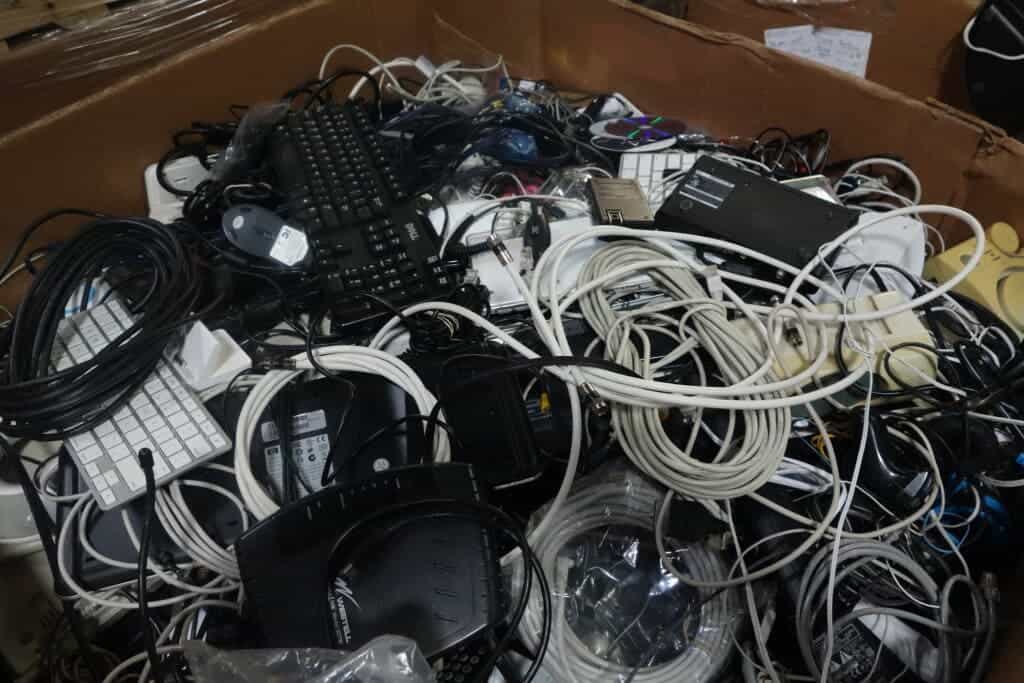There’s a growing amount of waste electronic and electrical equipment (WEEE) generated every year, and 2021 is no exception. An assessment by an international expert group says electronics waste will total an estimated 57.4 million tons, which is greater than the mass of the Great Wall of China, Earth’s heaviest artificial object.

From 2014 to 2020, WEEE increased by nearly 21%, at a rate between 3% and 4% annually. In 2021, WEEE is slated to increase by nearly 7%, a rate of waste generation nearly double seen in just the last couple of years, and is now on a predicted course to reach 74 million tons by 2030, according to the WEEE forum. Even if we consider only the last couple of years as our baseline, global e-waste generation is growing annually by at least two million tons, a problem attributed to higher consumption of electronics and short product lifecycles.
“As long as citizens don’t return their used, broken gear, sell it, or donate it, we will need to continue mining all-new materials causing great environmental damage,” Pascal Leroy, head of the WEEE Forum, said in a statement. “Many factors play a role in making the electrical and electronics sector resource efficient and circular.”
A growing problem
Mobile phones, fridges, televisions, electric toys and kettles are among the many items that are discarded every year and largely not recycled. It’s not only an environmental problem but also an economic one, as the world’s e-waste has a material value of $62.5 billion, more than the GDP of most countries, according to a 2019 report.
About 11 of 72 electronic items in an average household are no longer in use or broken, according to estimates from Europe by WEEE forum, the region with the most information. EU citizens are even estimated to hoard four to five kilograms of unused electronics. In France, a study estimates 54 to 113 million mobile phones are gathering dust in storage spaces.
“E-waste is one of the fastest growing waste streams, in Europe and around the world. To change this trend we should not think of it as waste, but rather wasted opportunity as longer-lasting products would be massive savings not just for consumers, but in precious raw materials and CO2 emissions,” Virginijus Sinkevičius, EU Commissioner for Environment, Oceans and Fisheries, said in a statement.
We currently have a linear approach to manufacturing, ownership and disposal of electronic products. This means that after we buy it, the sole responsibility for the product is handed to us. In the best case, the product is recycled, but that’s not usually what happens. Instead, they most often than not end up in a landfill where they are treated like any other waste.
Only 17.4% of the e-waste generated in 2019 was known to be properly treated and recycled – much lower than the 40-50% estimated by members of the public in surveys. In the case of phones, tablets, and computers, many factors discourage recycling, such as date security, product value, and difficult-to-reach return points.
This model puts a high pressure on Earth’s finite resources and is unsustainable. That’s why environmental groups are asking for a transition to a circular economy, under which manufacturers would have responsibility for the end-of-life handling of the products they sell. Companies would have to manage any repairs or as a last resort recycle the components.
“Each of us has a crucial role in making circularity a reality for e-products. This is more important than ever as our governments go into COP26 to discuss global action to reduce carbon emissions. Every ton of WEEE recycled avoids around 2 tons of CO2 emissions. If we all do the right thing with our e-waste we help to reduce harmful CO2 emissions,” said Leroy.









